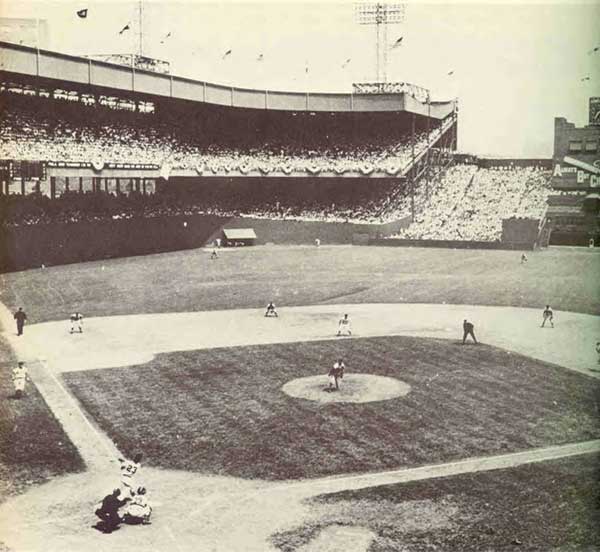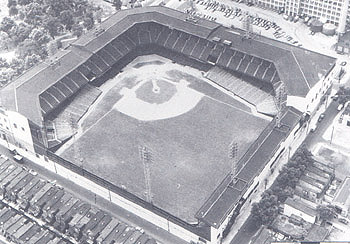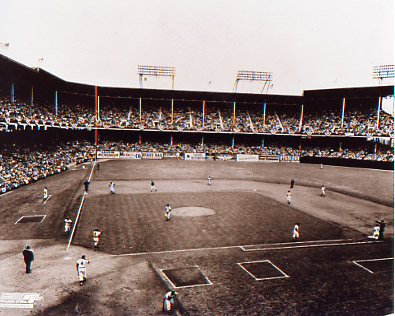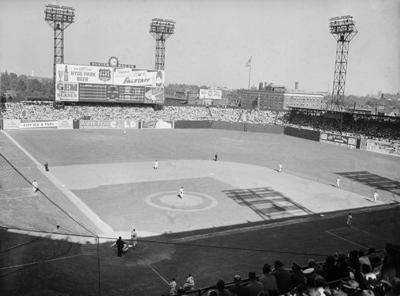The Spreading of Baseball
 By 1858, baseball in New York and Brooklyn was widely popular. The so called "fans" began following their prospective clubs and by this time a bitter rivalry between New York and Brooklyn grew, so much so that a challenge was arranged between the two areas and it was agreed that both would choose the best players from both sides. All-Star teams were basically created and Brooklyn supposedly by this time had better teams than did the New Yorkers. A best of three series was arranged to be played at Fashion Course. The star for Brooklyn was J.B. Leggett while the New York side had a little known, former cricket player, named Harry Wright. The New York side won the first game 22-18 and then on August 17th, Brooklyn dominated by a score of 29-8. The final game was played September 10th and as Al Spalding noted in his memoirs that the game saw the highest attendance to that date to watch a baseball game. New York won 29-18 and still maintained supremacy as baseball's champions in the New York area. This series was a key in early baseball history because of the hype it had garnered and would lead to baseball's first tour.
By 1858, baseball in New York and Brooklyn was widely popular. The so called "fans" began following their prospective clubs and by this time a bitter rivalry between New York and Brooklyn grew, so much so that a challenge was arranged between the two areas and it was agreed that both would choose the best players from both sides. All-Star teams were basically created and Brooklyn supposedly by this time had better teams than did the New Yorkers. A best of three series was arranged to be played at Fashion Course. The star for Brooklyn was J.B. Leggett while the New York side had a little known, former cricket player, named Harry Wright. The New York side won the first game 22-18 and then on August 17th, Brooklyn dominated by a score of 29-8. The final game was played September 10th and as Al Spalding noted in his memoirs that the game saw the highest attendance to that date to watch a baseball game. New York won 29-18 and still maintained supremacy as baseball's champions in the New York area. This series was a key in early baseball history because of the hype it had garnered and would lead to baseball's first tour.
Baseball takes to the Road with Jim Creighton
 Using the momentum created from the NY-Brooklyn series, the Brooklyn Excelsiors set off on a tour to the west. The Excelsiors were the prized owner of baseball's first superstar and probably the first player to be paid. He was only 19 at the time but he could hit, field and was the first pitcher to actually try to pitch. He would snap his wrist, use his hips and tried to use a sort of rise ball to fool batters. At the time of gentlemanly sportsmanship many people complained. But leading baseball expert Henry Chadwick thought nothing of it and soon others would emulate Creighton. Thus the pitcher-batter confrontation first began to take root.
Using the momentum created from the NY-Brooklyn series, the Brooklyn Excelsiors set off on a tour to the west. The Excelsiors were the prized owner of baseball's first superstar and probably the first player to be paid. He was only 19 at the time but he could hit, field and was the first pitcher to actually try to pitch. He would snap his wrist, use his hips and tried to use a sort of rise ball to fool batters. At the time of gentlemanly sportsmanship many people complained. But leading baseball expert Henry Chadwick thought nothing of it and soon others would emulate Creighton. Thus the pitcher-batter confrontation first began to take root.



